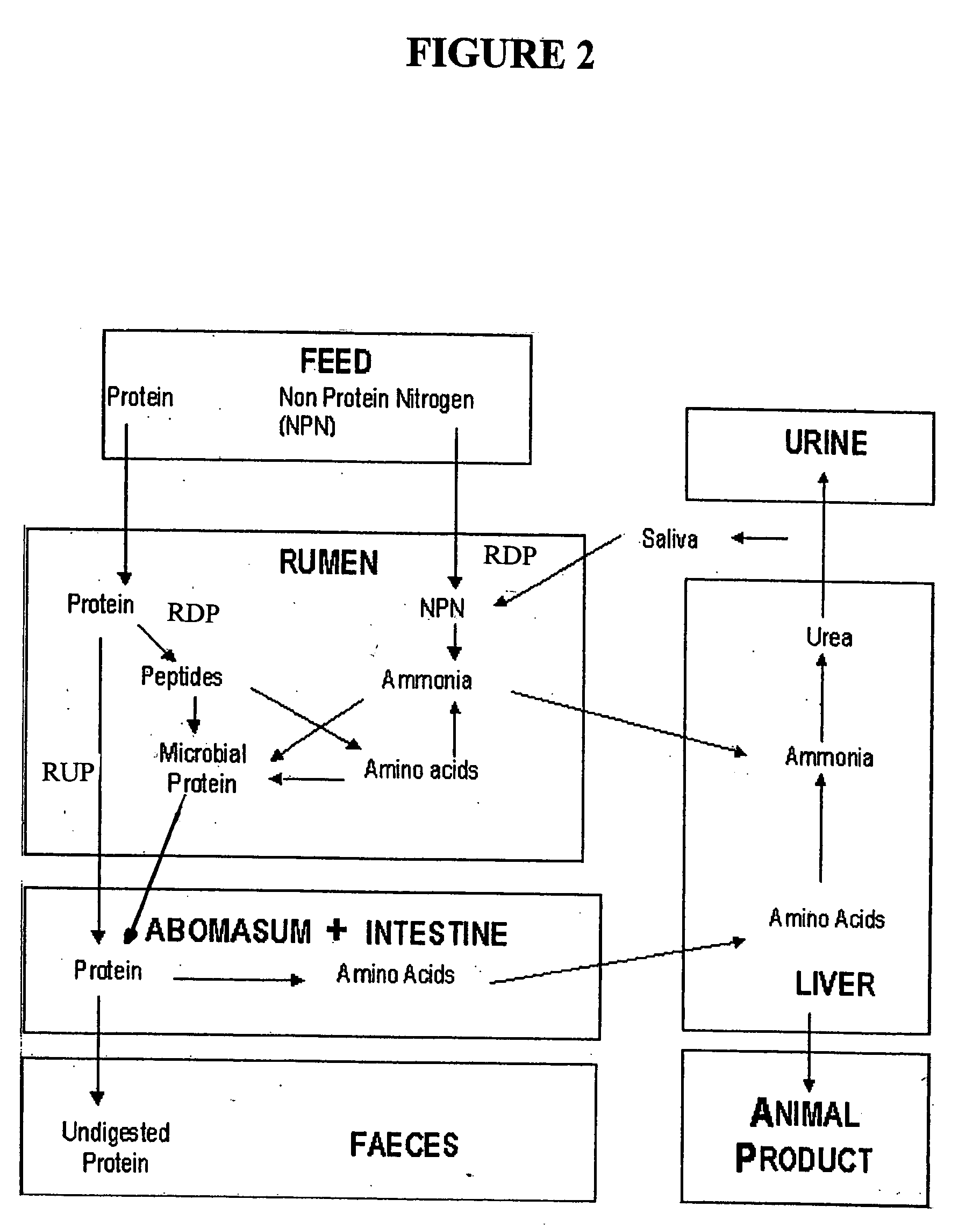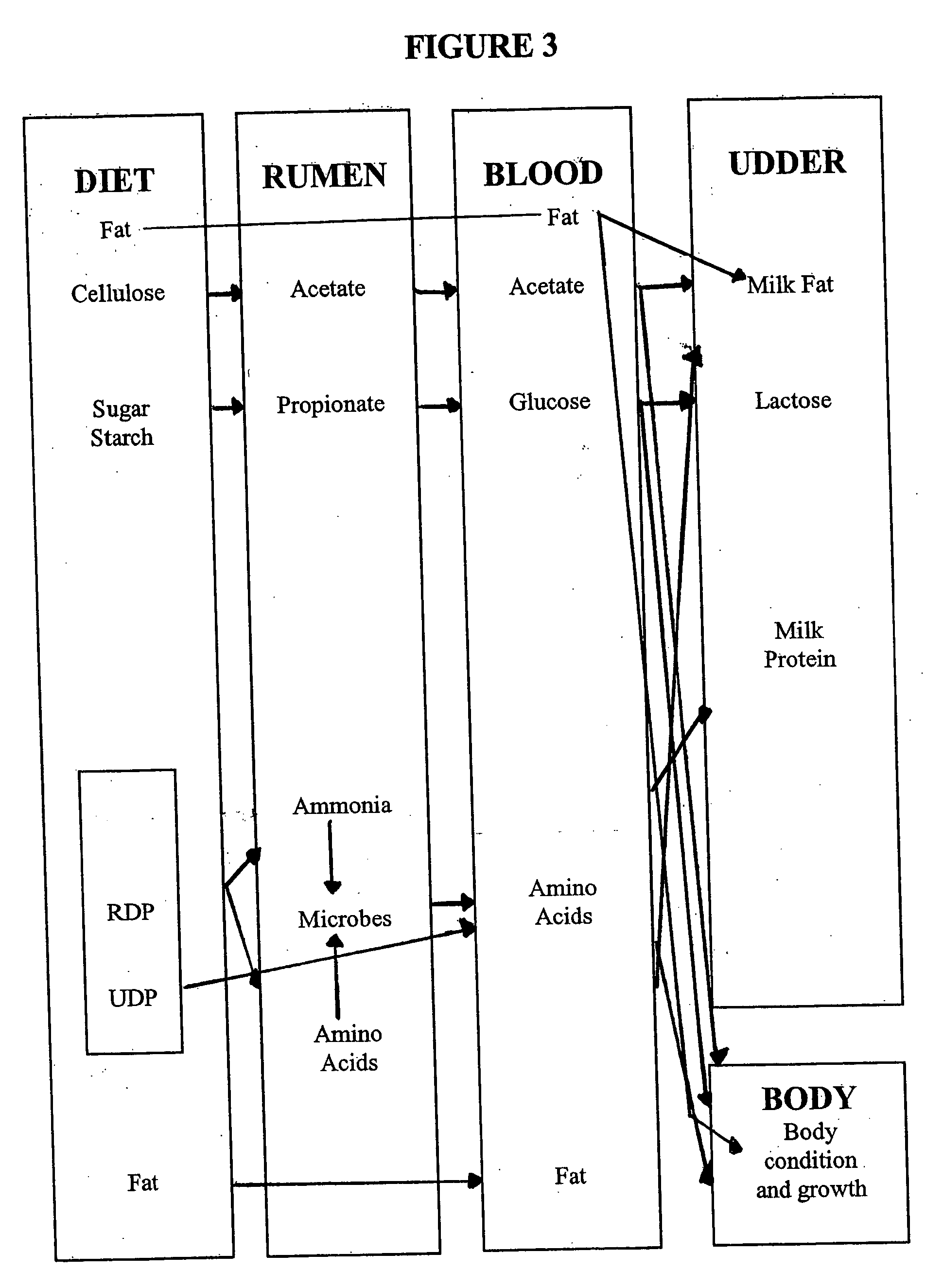Process, system and method for improving the determination of digestive effects upon an ingestable substance
a technology of digestive effects and ingestable substances, which is applied in the field of process system and method for improving the determination of digestive effects upon an ingestable substance, can solve the problems of not improving utilization efficiency, reducing milk production, and concomitant improvement of body condition and body weight, so as to improve ruminant digestion and improve the environmental impact of ruminant waste products , the effect of enhancing milk production
- Summary
- Abstract
- Description
- Claims
- Application Information
AI Technical Summary
Benefits of technology
Problems solved by technology
Method used
Image
Examples
example 1
[0221] Feedstuff A is assayed using the MN-3-step. At the same time, a sample of a blood meal standard and a sample of casein standard are also assayed. Measured RUP and dRUP are 85 and 90%, and 55 and 80% for sample A and standard blood meal, respectively, and that measured dRUP is 100% on the casein standard. Prior means are 40, 70 and 98% and prior variances are 77.7, 331.7, and 38.2 for the RUP of the blood meal, the dRUP of blood meal, and the dRUP of casein, respectively. Measurements were made in duplicates so the variances of the actual measurements are one half those of the priors. The calculations used for the mono-standard Kalman filter correction for the RUP and the di-standard Kalman filter correction for the dRUP are as follows.
1. Calculating a Corrected RUP for the Standard Blood Meal.
[0222] This is done by taking a weighed average of the prior RUP for the standard (40%) with the value of the actual measurement (55%), each weighed by the reciprocal of their varianc...
PUM
| Property | Measurement | Unit |
|---|---|---|
| temperature | aaaaa | aaaaa |
| volume | aaaaa | aaaaa |
| boiling point | aaaaa | aaaaa |
Abstract
Description
Claims
Application Information
 Login to View More
Login to View More - R&D
- Intellectual Property
- Life Sciences
- Materials
- Tech Scout
- Unparalleled Data Quality
- Higher Quality Content
- 60% Fewer Hallucinations
Browse by: Latest US Patents, China's latest patents, Technical Efficacy Thesaurus, Application Domain, Technology Topic, Popular Technical Reports.
© 2025 PatSnap. All rights reserved.Legal|Privacy policy|Modern Slavery Act Transparency Statement|Sitemap|About US| Contact US: help@patsnap.com



